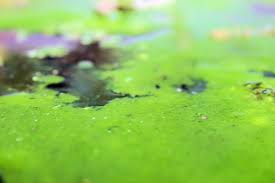 More than 100 people have fallen ill because of a toxic algal bloom covering nine tenths of Utah Lake in the USA. The dangerous algal bloom is now spreading to nearby waterways, officials say.
More than 100 people have fallen ill because of a toxic algal bloom covering nine tenths of Utah Lake in the USA. The dangerous algal bloom is now spreading to nearby waterways, officials say.
Algal blooms have caused problems around the world, including Africa. A severe algal bloom swept through South Africa’s west coast last year, killing an estimated two hundred tons of rock lobsters.
Decades of research and billions of dollars have been spent in an attempt to understand the causes of toxic algae blooms, however there have been few results to solve the dangerous threat to the world’s oceans and fresh water reserves. Findings show that algae blooms and dead zones – the low-oxygen areas that form when vast algal blooms die – are a result of the influx of fertilizer, manure and wastewater into lakes, rivers and oceans. Algal blooms and dead zones have been considered a major problems for decades, and many countries including the United States, Europe, Australia, China have since spent billions of dollars on research and remedies to the nutrient pollution it causes.






